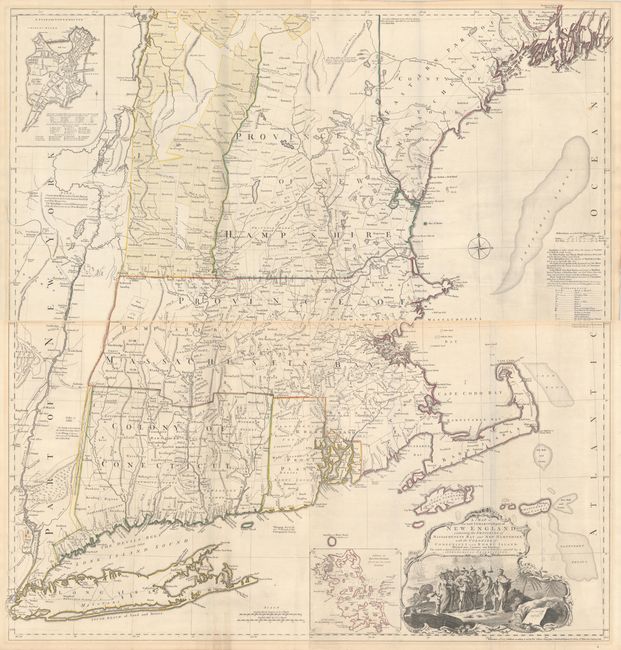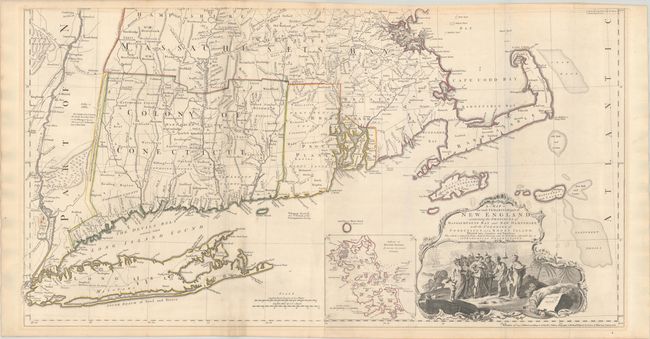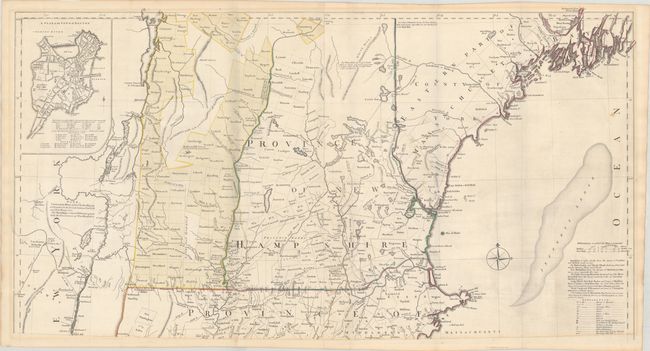Catalog Archive


Auction 189, Lot 157
Jefferys' Influential Map of New England in Contemporary Outline Color
"[On 2 Joined Sheets] A Map of the Most Inhabited Part of New England, Containing the Provinces of Massachusets Bay and New Hampshire, with the Colonies of Conecticut and Rhode Island...", Jefferys, Thomas
Subject: Colonial New England United States
Period: 1774 (dated)
Publication:
Color: Hand Color
Size:
38.8 x 20.5 inches
98.6 x 52.1 cm
Download High Resolution Image
(or just click on image to launch the Zoom viewer)
(or just click on image to launch the Zoom viewer)


